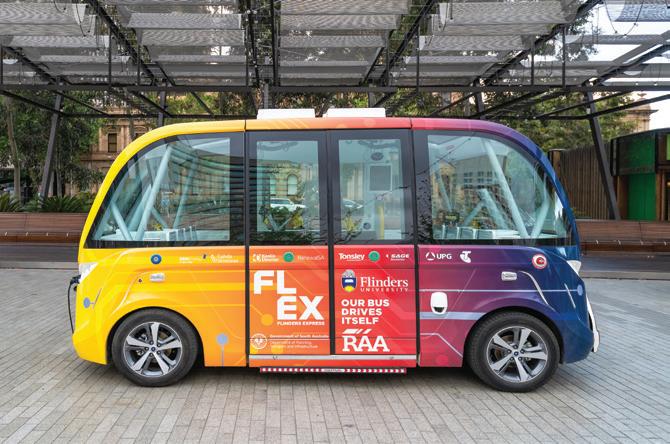
5 minute read
Digital Services – A new level asked from regional providers
New community expectations have all organisations trying to keep up with digital transformation.
In my experience in the ICT industry, I have witnessed many significant changes surrounding mainstream adoption of technologies and have become familiar with the various factors that play a role in the speed of technology adoption, having been engaged in technology adoption for over 3 decades.
Advertisement
Around 9 years ago, I published a series of articles and delivered several presentations on the topic
“The Pressure for Change”. In these talks, I set out to describe the tension created among three parties, namely digital innovators trying to gain traction for new products and services, the community’s ability to change and adopt these innovations and become customers, and government’s ability to either de-regulate or regulate to support the change that innovation brings.
My proposition was that government is generally the slower of these three, and so those innovations that rely on regulatory change will gain traction late.
Next slowest was the community. People need a compelling argument to change their habits, and many innovations simply don’t stack up.
Those that did stack up initially, were those where the product or service could be digitalised readily, creating convenience and improved utility for customers. Thus, banking, entertainment (TV/ movies/music), information and knowledge (newspapers, magazines, books and directories) were all
“first movers”, as governments had a minimal role to play here and therefore weren’t slowing the process by “getting in the way” (or failing to “get out of the way”).
Other innovations were either digitalising aspects of existing physical services, or creating new physical services with the help of various digital solutions. This included ride-sharing services like Uber; food and grocery delivery services; and a number of other improvements when it came to researching and buying products and services, even if the final sale and delivery was done in a non-digital way. In fact, house, car, and many other types of purchases are now performed partly online and partly offline, with some providers having moved (or moving into) fully digital sales models.
Some of these generated more interest from Government than others, especially where they conflicted with existing regulation. Ride-sharing is the most notable example here. To their credit, Uber (and others) adopted a “crash or crash through” approach to that problem. It is unlikely they ever would have gained sufficient patience from their
By Mark Nicholls
investors and achieved success if they waited for every government to go about due consideration and change. They created a problem and forced governments to address it. It worked, but was not without damage. A number of legacy license holders were big losers and various governments, even today, are still taking rearguard action.
How has the pandemic affected this dynamic? Firstly, community priorities have changed. The general public needed better ways of going about their lives due to enforced lockdowns or self-imposed restrictions on movement. Industry (and Government) service providers needed new ways of delivering services to customers, citizens, staff and students. And Government, in their regulatory role, wanted to facilitate many of these as it helped to minimise the impact of restrictions on physical movement by supporting as much economic and community activity as possible.
As a result, the interests of all parties aligned, and we gained massive acceleration in digital adoption across so many sectors.
Many of the technologies adopted have been around for many years, even decades, so it was not a question of whether these were new, but whether they were being newly adopted. These technologies created the enablers, the pre-existing capability that could be scaled. This included cloud technologies - allowing services and systems to be accessible anywhere and scaled immediately – as well as video conferencing, which was already gaining wider adoption with Zoom making the services provided by Cisco and others more accessible. Microsoft was already well advanced on its Teams solutions, although they did accelerate their development through the pandemic, as did many technology providers. Even QR codes, first used by millions through the pandemic, have been around for over 25 years - it was defined as an ISO (International Standards Organisation) standard 22 years ago.
As we move slowly (hopefully) out of the COVID-19 pandemic and into an endemic phase, what have we learned in digital innovation adoption and where are the opportunities today/tomorrow?
In many cases, community expectations for digital services are moving faster than some organisations can provide. Those organisations most challenged are smaller organisations, those that operate in regulated environments with restrictions on revenue growth, and this also tends to be regulated service providers in the non-metropolitan regions of Australia. This may include local government, utilities, healthcare, community, and aged care providers. Furthermore, skills are a big challenge generally, and in regional areas this is an even bigger issue.
What is the solution to all this unfulfilled digital transformation ambition?
One answer lies in the lesson of the pandemic. As stated above, “the interests of all parties aligned and we gained massive acceleration in digital adoption across so many sectors.”
If we align the interests of regional service providers, how can they better collaborate, and potentially create economies of scale to digitise more quickly? And with their customers geographically distributed more than most, they have an even more compelling argument to provide digitised services.
Sharing technology platforms, digital skills, and internal technology capabilities all offer accelerators for regional providers. Cloud technologies offer capabilities that support this. Commonwealth and state governments have been quietly adopting various forms of shared technology provision for some years now. This lowers the cost of digital service delivery, allowing scarce funds to be redirected into improving services. That investment in improvements also goes further with shared use of the same capability.
While traditional “shared services” delivered some unfulfilled promises over a decade ago, the new shared models supported by new technologies are now generating many benefits for the clusters, consortiums, and alliances that adopt them.
Our building body of case studies are increasingly reflective of the quiet promise that is delivering results across Australia.

Mark Nicholls is a partner and CEO of Information Professionals Group (IPG), as well as National Deputy Chair of the Australian Information Industry Association.



